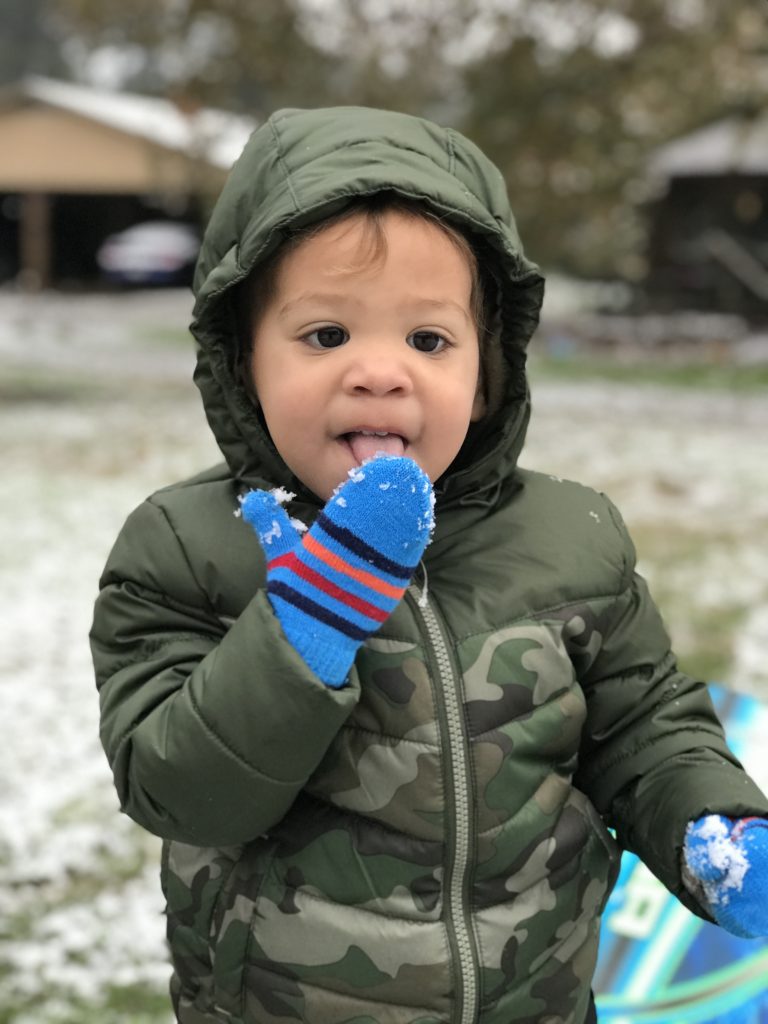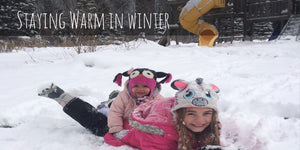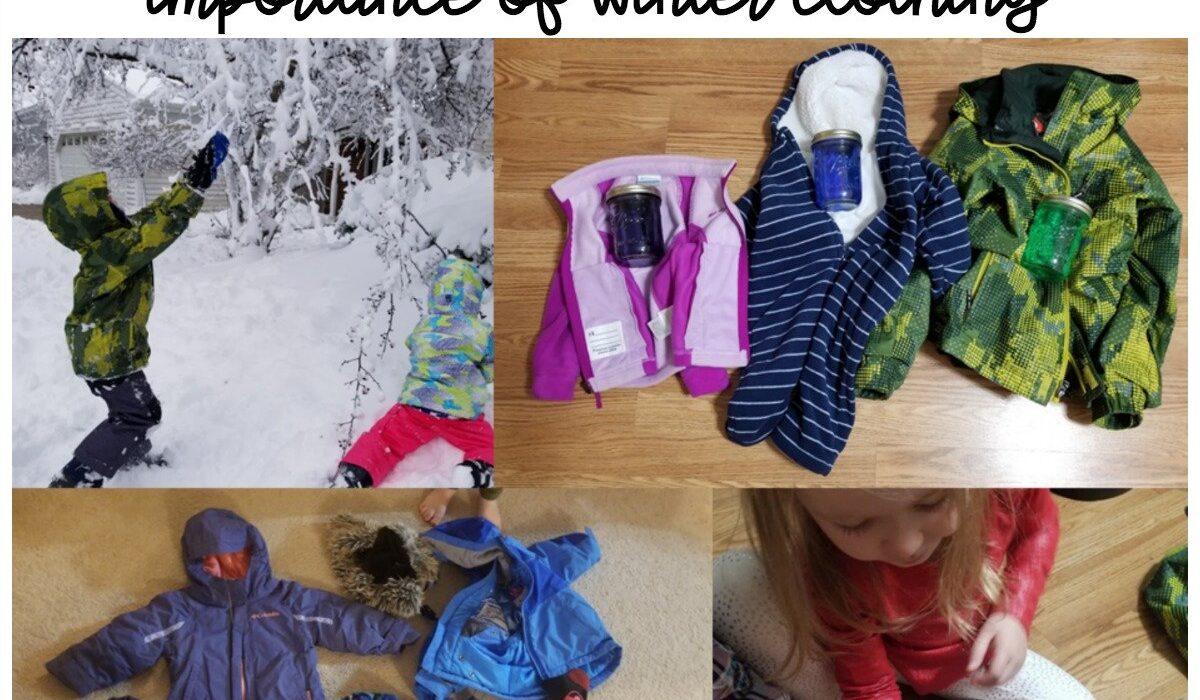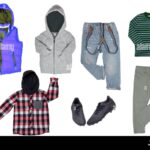Dress kids in layers for winter activities, starting with moisture-wicking base layers, followed by insulating mid-layers and waterproof outer layers. Don’t forget warm accessories like hats, gloves, and scarves.
Winter activities can be a blast for kids, but staying warm is crucial for their comfort and safety. Dressing them properly ensures they can enjoy outdoor fun without feeling cold or damp. Layering is key; it allows for easy adjustments based on temperature changes.
Choosing materials that wick moisture away from the skin helps keep them dry. Waterproof and windproof outer layers protect against harsh weather conditions. Warm accessories, such as hats and gloves, are essential to keep extremities warm. With the right clothing, kids can fully enjoy their winter adventures without discomfort.
Table of Contents
Dressing Little Ones For Winter Wonderland
Winter brings joy and excitement for children. Snow-filled days invite playful adventures. Dressing your kids properly ensures they enjoy their time outdoors. Here’s how to keep them warm and safe.
Safety First: Layering Basics
Layering is key for winter activities. Layers trap heat and keep kids comfortable. Follow these tips for effective layering:
- Base Layer: Start with moisture-wicking fabric. This keeps skin dry.
- Middle Layer: Use insulating materials. Fleece or wool works well.
- Outer Layer: Choose a waterproof and windproof jacket. This protects from the elements.
Adjust layers based on activity levels. If kids run around, they might get hot. Remove a layer to cool down.
Materials Matter: Choosing The Right Fabrics
The right fabrics make a big difference. Here are some materials to consider:
| Material | Benefits |
|---|---|
| Wool | Warm and moisture-wicking |
| Fleece | Lightweight and insulating |
| Polyester | Quick-drying and durable |
| Nylon | Water-resistant and strong |
Avoid cotton for base layers. It absorbs moisture and stays wet. This can lead to cold, uncomfortable kids.
Choose bright colors for visibility in snow. Reflective materials help keep kids safe.
Essential Layers To Keep Kids Warm
Winter activities are fun, but staying warm is crucial. Kids can easily get cold, so layering is key. The right layers trap heat and keep them comfortable. Here’s how to dress your kids for winter play.
Starting With Thermals
Thermals are the first layer. They fit snugly against the skin. This helps to trap warmth. Choose materials like:
- Wool: Naturally insulating and moisture-wicking.
- Polyester: Lightweight and quick-drying.
- Silk: Soft and comfortable but less durable.
Look for thermal tops and bottoms. Ensure they are breathable. Avoid cotton as it retains moisture and can make kids cold.
Mid-layers For Insulation
The mid-layer adds warmth. This layer traps body heat. Fleece and down jackets work well. Choose items that are:
- Lightweight: Easy for kids to move.
- Warm: Provides necessary insulation.
- Layerable: Fits comfortably under outerwear.
Consider using a combination of:
- Fleece pullovers
- Insulated vests
- Softshell jackets
These options keep kids warm without bulk. They can be easily removed when indoors.
Protective Outerwear Selection
The outer layer protects against wind and moisture. Choose waterproof and windproof jackets. Key features include:
- Hoods: Protects the head and neck.
- Adjustable cuffs: Keeps snow out.
- Reflective materials: Enhances visibility.
Look for snow pants that are:
| Feature | Description |
|---|---|
| Insulated | Provides warmth without heaviness. |
| Waterproof | Keeps kids dry in wet conditions. |
| Easy to put on | Quick for kids to get ready. |
Good outerwear ensures kids stay warm and dry. This allows for longer, more enjoyable winter activities.
Footwear Fundamentals For Frosty Feet
Keeping kids’ feet warm and dry is crucial during winter activities. The right footwear ensures comfort and safety. Here are essential tips to choose the best winter boots and socks.
Waterproof Boots For Snowy Adventures
Waterproof boots are a must for snowy adventures. Kids love playing in the snow, but wet feet can ruin the fun. Look for boots with the following features:
- Insulation: Keeps feet warm in freezing temperatures.
- Waterproof materials: Prevents snow and water from getting inside.
- Non-slip soles: Provides traction on slippery surfaces.
- Easy to put on: Look for boots with wide openings and adjustable straps.
Here is a simple table to help you choose the right size:
| US Size | Foot Length (inches) | Recommended Age |
|---|---|---|
| 10 | 6.3 | 2-3 years |
| 12 | 7.0 | 4-5 years |
| 1 | 7.5 | 6-7 years |
| 3 | 8.0 | 8-9 years |
Socks: The Unsung Heroes
Socks play a vital role in winter footwear. They keep feet warm and wick away moisture. Choose socks with these qualities:
- Material: Look for wool or synthetic blends.
- Thickness: Thicker socks provide extra warmth.
- Fit: Ensure they fit snugly without being too tight.
Remember to avoid cotton socks. Cotton absorbs moisture and makes feet cold. Always check for:
- Comfort: No seams or tags that irritate the skin.
- Height: Choose crew or knee-high for better coverage.
- Durability: Look for reinforced toes and heels.
With the right waterproof boots and quality socks, kids will enjoy winter activities. Keep their feet warm and happy for endless fun in the snow!
Accessorize Wisely: Hats, Gloves, And Scarves
Winter activities can be fun. Keeping kids warm is essential. The right accessories make a big difference. Hats, gloves, and scarves are key for comfort.
Headgear To Retain Heat
A good hat keeps heat from escaping. Look for options that cover ears. Choose materials like wool or fleece for warmth. Here are some popular hat styles:
- Beanies: Cozy and snug.
- Trapper hats: Flap covers for extra warmth.
- Headbands: Great for active kids who dislike hats.
Colorful designs make wearing hats fun. Let kids pick their favorite colors. This encourages them to wear their hats.
Hand Protection: Mittens Vs. Gloves
Keeping hands warm is crucial. Mittens are warmer than gloves. They keep fingers together, generating heat. Gloves offer more flexibility. Kids can grip objects easily. Here’s a quick comparison:
| Feature | Mittens | Gloves |
|---|---|---|
| Warmth | High | Medium |
| Dexterity | Low | High |
| Best for | Cold weather | Active play |
Choose based on the activity. For snowball fights, mittens are ideal. For building snowmen, gloves work better.
Neck Warmers For Added Comfort
A warm neck is vital during winter. Scarves can be bulky. A neck warmer fits snugly and feels cozy. Look for options that are:
- Stretchy: Easy to put on.
- Soft: Comfortable against the skin.
- Warm: Thick fabrics like fleece are best.
Kids can wear them under jackets. This ensures no cold air sneaks in. Let kids choose fun patterns or colors. This makes them excited to wear neck warmers.
Weather-proofing With Style
Dressing kids for winter activities combines warmth and fun. Parents want their children to stay cozy while looking stylish. The right gear can make outdoor play enjoyable. Let’s explore how to achieve this balance.
Fashion Meets Function
Winter clothing must be both fashionable and functional. Here are essential items to consider:
| Item | Function | Style Tips |
|---|---|---|
| Winter Jacket | Insulates against cold | Choose bright colors or trendy patterns |
| Snow Pants | Keeps legs warm and dry | Look for adjustable straps for comfort |
| Winter Boots | Prevents slipping and wet feet | Opt for colorful designs |
| Gloves/Mittens | Keeps hands warm | Select fun prints or characters |
Always choose materials that resist water and wind. Look for breathable fabrics. This keeps kids comfortable during playtime.
Colorful And Fun Patterns
Bright colors and playful designs make winter wear exciting. Kids love expressing their personalities through clothing. Here are ideas for patterns:
- Animal Prints: Choose jackets with fun animal designs.
- Cartoon Characters: Look for boots featuring favorite characters.
- Geometric Shapes: Select snow pants with colorful shapes.
- Floral Patterns: Perfect for a unique winter look.
Mix and match patterns for a fun outfit. Use accessories like hats and scarves to add flair. Bright colors help kids stand out in the snow.
Incorporating style into winter wear keeps kids happy. They will enjoy outdoor activities much more. Dress them for success with fashionable, weather-proof clothing!

Credit: seekadventuresblog.com
Adapting Outfits For Various Winter Activities
Winter brings fun activities for kids. Dressing them properly ensures warmth and comfort. Different activities require different outfits. Here are tips for snow play and winter sports.
Snow Play Attire
Snow play is all about fun. Kids love making snowmen and snow angels. Here’s how to dress them:
- Base Layer: Use thermal tops and bottoms.
- Insulating Layer: Add fleece or wool sweaters.
- Outer Layer: Choose waterproof jackets and snow pants.
- Accessories: Don’t forget hats, gloves, and scarves.
Here’s a quick guide:
| Item | Description |
|---|---|
| Base Layer | Lightweight thermal clothing. |
| Insulating Layer | Fleece or wool for warmth. |
| Outer Layer | Waterproof and windproof gear. |
| Accessories | Warm hats, gloves, and scarves. |
Dressing For Winter Sports
Winter sports like skiing or snowboarding require special outfits. Kids need to stay warm and move freely. Here’s how to prepare:
- Base Layer: Moisture-wicking thermal wear.
- Mid Layer: Insulating fleece or down jackets.
- Outer Layer: Waterproof ski jackets and pants.
- Helmet: Ensure safety while skiing.
- Boots: Insulated and waterproof snow boots.
Remember these tips:
- Choose bright colors for visibility.
- Ensure clothes fit well but allow movement.
- Layering is key for warmth.
Size Matters: Ensuring Room For Growth
Choosing the right size for winter clothes is crucial. Kids grow quickly. Buying clothes that fit now can lead to waste. Look for options that offer space for growth. This approach saves money and ensures comfort.
Buying For Now And Later
Many brands design winter clothes with growth in mind. Here are some tips:
- Size Up: Choose one size larger than needed.
- Layering: Buy clothes that can be layered easily.
- Quality Over Quantity: Invest in durable items.
Consider buying versatile pieces. These can transition through seasons. For example, a long-sleeve shirt can be worn alone or under a jacket.
Adjustable Features For Longevity
Look for adjustable features in winter clothing. This helps extend the life of garments:
| Feature | Benefits |
|---|---|
| Elastic Waistbands | Accommodates growth without discomfort. |
| Adjustable Cuffs | Prevents snow from entering sleeves. |
| Length Extensions | Prolongs the use of pants and jackets. |
These features make clothing adaptable. Kids can wear them longer. Comfort increases with the right fit.
Maintenance Tips For Winter Wear
Winter wear needs proper care. This keeps it ready for fun. Follow these tips for cleaning, storing, and repairing your kids’ winter gear.
Cleaning And Storing
Cleaning winter wear is important. Dirt and moisture can damage it. Here are some simple steps:
- Read labels: Always check care instructions.
- Wash gently: Use a mild detergent on a delicate cycle.
- Air dry: Avoid the dryer; hang clothes to dry.
- Store properly: Keep items in a cool, dry place.
Use these storage tips:
| Item | Storage Method |
|---|---|
| Coats | Hang on sturdy hangers |
| Snow Pants | Fold and place in a bin |
| Gloves and Hats | Store in a mesh bag |
Repairing Gear For Next Season
Check gear for damages. Fixing small issues helps save money. Here are some repair tips:
- Sew small holes: Use a needle and thread.
- Patch larger tears: Use iron-on patches.
- Replace zippers: Learn to install new ones.
- Waterproofing: Reapply waterproof spray if needed.
Taking care of winter wear helps it last longer. A little maintenance goes a long way.
Comfort Tricks For The Tiniest Ones
Keeping little ones warm during winter activities is crucial. The right clothing can make outdoor adventures fun. Here are some tricks to ensure comfort for your tiniest explorers.
Bunting Bags And Footmuffs
Bunting bags and footmuffs offer excellent warmth. They wrap around your child snugly. Here are some benefits:
- Easy to Use: Simply place your child inside.
- Extra Warmth: Covers the entire body.
- Freedom of Movement: Allows kids to wiggle their legs.
Choose a bunting bag with a waterproof outer layer. This keeps kids dry in snow. Look for footmuffs with a soft lining for added comfort.
Easy-on, Easy-off Designs
Outfits that are easy to put on and take off save time. Kids often resist complicated clothing. Consider these options:
- Jumpsuits: One-piece suits are simple.
- Zip-Up Jackets: Quick to open and close.
- Velcro Straps: Easy for little hands to manage.
Ensure clothing fits well but isn’t too tight. Loose garments allow for layering. Look for bright colors to keep kids visible in the snow.
| Item | Benefits |
|---|---|
| Bunting Bag | Complete coverage, warmth, and easy access. |
| Footmuff | Extra comfort, waterproof, and soft lining. |
| Jumpsuit | Simple wear, warmth, and full body coverage. |
| Zip-Up Jacket | Quick and easy, adjustable fit. |

Credit: www.packmoreintolife.com
Navigating Potty Breaks And Diaper Changes
Winter activities can be fun but require quick potty breaks and diaper changes. Parents need outfits that are easy to manage. Keep kids warm while making changes simple.
Convenient Outfit Features
Choose clothes that make potty breaks quick and easy. Look for these features:
- Elastic Waistbands: These allow easy pull-ups and pull-downs.
- Snap Closures: Snaps can replace buttons for fast access.
- Wide Leg Openings: These help fit over bulky winter gear.
- Layering Options: Use layers to keep kids warm without fuss.
Consider fabrics that are warm yet flexible. Soft materials help kids move freely. Avoid clothes that are too tight or restrictive.
Quick-change Tips
Make potty breaks and diaper changes a breeze with these tips:
- Dress kids in layers. Remove layers as needed.
- Use a portable changing mat for convenience.
- Practice quick changes at home. Kids will learn the routine.
- Keep wipes and diapers handy. Store them in an easy-access bag.
Encourage kids to help. Let them pull down their pants or hold the wipes. This makes the process smoother.
Choose the right time for breaks. Look for signs that a potty break is needed. Frequent breaks keep kids comfortable and happy during activities.
By focusing on convenience, parents can enjoy winter outings. Kids stay dry and warm, making the experience fun for everyone.
Avoiding Overheating Indoors
Keeping kids warm is important during winter. However, they can easily overheat indoors. This section covers how to dress kids properly. Focus on comfort and temperature control.
Strategic Layering
Layering is key for winter activities. It helps kids stay warm outside and cool inside. Follow these tips for effective layering:
- Base Layer: Choose moisture-wicking fabrics. These materials keep skin dry.
- Middle Layer: Use insulating materials like fleece. This adds warmth without bulk.
- Outer Layer: Select waterproof and windproof jackets. This protects against harsh conditions.
Remove layers easily. This allows kids to adjust their clothing indoors. Always check the weather before dressing.
Monitoring For Comfort
Always check on your child’s comfort level. Kids may not speak up when they feel too warm. Look for these signs:
- Red cheeks or forehead
- Excessive sweating
- Restlessness or irritability
Adjust clothing as needed. Encourage kids to express their comfort. Make it a fun activity to check layers together.
| Signs of Overheating | Action to Take |
|---|---|
| Red cheeks or forehead | Remove a layer |
| Excessive sweating | Switch to lighter clothing |
| Restlessness or irritability | Take a break and cool down |
Regular checks keep kids happy and comfortable. Dressing smartly helps them enjoy winter activities.
Incorporating Sun Protection
Winter activities are fun, but don’t forget about sun protection. Snow reflects sunlight. This makes UV rays stronger. Kids can get sunburned even in cold weather.
The Winter Sun Still Shines
During winter, the sun is still a concern. Clouds may cover the sun, but UV rays can reach your child’s skin. Here are some key points:
- Snow can reflect up to 80% of UV rays.
- Even on cloudy days, UV rays penetrate through clouds.
- Plan outdoor activities during morning or late afternoon.
Spf Clothing And Accessories
Choose clothing that protects against UV rays. Look for specially designed SPF clothing. These clothes block harmful rays effectively. Here are some options:
| Item | Benefits |
|---|---|
| Long-Sleeve Shirts | Cover arms and block UV rays. |
| Hats with Brims | Shade the face and neck. |
| UV-Protective Sunglasses | Protect eyes from harmful rays. |
| UPF Rated Jackets | Provide extra sun protection. |
Don’t forget sunscreen. Apply it to exposed skin. Choose a broad-spectrum sunscreen with at least SPF 30.
Reapply every two hours, especially after playing in the snow. This keeps your child’s skin safe.
Eco-friendly And Sustainable Choices
Choosing eco-friendly and sustainable clothing for kids helps the planet. Winter activities need warm clothes, but they can also be green. Look for materials that are kind to nature. Support brands that care about the environment. This helps create a brighter future for children.
Organic And Recycled Materials
Organic and recycled materials make great choices for winter wear. These materials reduce waste and pollution. Here are some key benefits:
- Organic Cotton: Grown without harmful chemicals.
- Recycled Polyester: Made from plastic bottles, reducing landfill waste.
- Wool: Natural, biodegradable, and keeps kids warm.
When shopping, look for labels like:
| Label | Meaning |
|---|---|
| GOTS | Global Organic Textile Standard |
| OEKO-TEX | No harmful substances in fabrics |
Supporting Ethical Brands
Choosing ethical brands supports fair practices. These brands focus on the well-being of workers and the environment. Here are some brands to consider:
- Patagonia: Offers durable and eco-friendly clothing.
- Mini Rodini: Uses organic materials and promotes sustainability.
- Reima: Focuses on recycled materials for kids’ winter gear.
Supporting these brands helps make a difference. Kids deserve a healthy planet. Eco-friendly winter clothing is a smart choice for every family.
Involving Kids In The Dressing Process
Getting kids dressed for winter activities can be fun. Involving them makes it easier. Kids learn skills and feel proud. They enjoy the experience more. Here are two ways to engage them.
Teaching Self-dressing Skills
Teaching self-dressing skills helps kids gain independence. Start with simple tasks. Here are some steps:
- Choose clothing with easy fasteners.
- Encourage them to pick their outfits.
- Show them how to layer clothes.
- Practice putting on gloves and hats.
Use a checklist to track their progress. Kids love checking off tasks. Celebrate their achievements. It builds confidence.
Making It A Game
Turn dressing into a fun game. Kids love competition. Here are some ideas:
- Set a timer for getting dressed.
- Reward them for finishing quickly.
- Make a fashion show with their outfits.
- Sing a fun song while they dress.
Using games keeps kids engaged. They learn while having fun. This approach makes dressing for winter enjoyable.

Credit: wilderchild.com
Frequently Asked Questions
How Should I Layer Kids For Winter Activities?
Layering involves a moisture-wicking base layer, insulating middle layer, and a waterproof outer layer for warmth.
What Materials Are Best For Winter Clothing?
Opt for materials like wool, fleece, and synthetic fabrics, which offer warmth and moisture-wicking properties.
How Do I Choose Winter Accessories For Kids?
Select accessories like hats, gloves, and scarves that fit snugly and are made from warm, breathable materials.
What Footwear Is Suitable For Winter Play?
Waterproof boots with insulation and good traction are essential for keeping kids warm and safe during winter activities.
How Can I Keep Kids Warm Outdoors?
Encourage regular breaks indoors, ensure proper layering, and use hand and foot warmers for extra warmth.
Conclusion
Dressing kids for winter activities is essential for their comfort and safety. Layering is key to keeping them warm and dry. Choose moisture-wicking fabrics and insulated outerwear. Don’t forget accessories like gloves and hats. With the right gear, your children can enjoy winter fun without the chill.
Happy adventuring!







